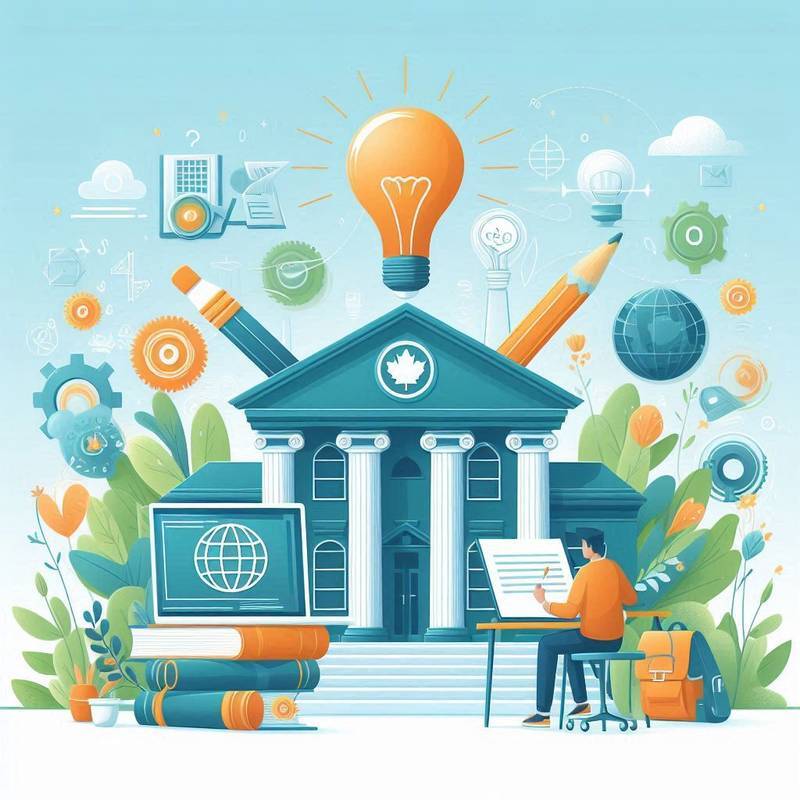Student loan debt is a growing concern for many Canadians, with the average student graduating with over $26,000 in debt, according to the Canadian Federation of Students. If you’re struggling to repay your student loans and feeling overwhelmed by your debt, a consumer proposal may provide the relief you need. In this comprehensive guide, we’ll take an in-depth look at how a consumer proposal can help you manage your student loan debt in Canada, including eligibility requirements, the process, pros and cons, and alternatives to consider.
Understanding Student Loan Debt in Canada
Before we dive into consumer proposals, let’s take a closer look at student loan debt in Canada. According to the Government of Canada, student loans are available through the federal government’s Canada Student Loans Program (CSLP) and various provincial and territorial student aid programs. These loans are designed to help students pay for their post-secondary education, including tuition, books, and living expenses.
However, many students find themselves struggling to repay their loans after graduation, especially if they are unable to find well-paying jobs in their field. In fact, a 2018 survey by BDO Canada found that 77% of graduates with student loans regret taking on that debt, and 30% of millennials with student loans say they would have gone to school later in life to reduce their debt load.
Types of Student Loans in Canada
There are two main types of student loans in Canada: federal and provincial. Federal student loans are provided through the CSLP and are available to full-time and part-time students who demonstrate financial need. Provincial student loans vary by province and territory but generally have similar eligibility requirements to federal loans.
In addition to government-provided student loans, some students may also have private student loans through banks, credit unions, or other financial institutions. These loans typically have higher interest rates and less flexible repayment terms than government student loans.
Repayment of Student Loans in Canada
Repayment of federal student loans typically begins six months after the student graduates or leaves school, with a standard repayment term of 114 months (9.5 years). However, students can apply for the Repayment Assistance Plan (RAP) if they are struggling to make their payments. RAP can provide relief in the form of reduced payments or payment deferrals, depending on the borrower’s financial situation.
Provincial student loan repayment terms vary by province but generally follow a similar structure to federal loans. Private student loans may have different repayment terms and options, depending on the lender.
What is a Consumer Proposal?
A consumer proposal is a formal, legally binding agreement between a debtor and their creditors to settle their unsecured debts. It is administered by a licensed insolvency trustee (LIT) and is an alternative to bankruptcy for those struggling with unmanageable debt.
In a consumer proposal, the debtor offers to pay their creditors a percentage of what they owe, extend the time they have to pay off the debt, or provide some combination of both. The proposal is based on the debtor’s ability to pay and must be accepted by a majority of the creditors (by dollar value) before it can be approved.
Once a consumer proposal is accepted, the debtor makes a single monthly payment to the LIT, who then distributes the funds to the creditors as agreed upon in the proposal. As long as the debtor fulfills the terms of the proposal, they are legally protected from further collection action by their creditors.
Eligibility for a Consumer Proposal
To be eligible for a consumer proposal in Canada, you must:
- Be an individual (not a corporation) who is insolvent, meaning you are unable to pay your debts as they become due
- Have unsecured debts between $1,000 and $250,000 (excluding mortgage debt)
- Have a stable source of income that allows you to make the proposed payments
- Be able to provide a reasonable proposal to your creditors that they are likely to accept
It’s important to note that not all debts can be included in a consumer proposal. Secured debts (such as mortgages or car loans), student loans that are less than seven years old, and certain types of government debts (such as court-ordered fines or penalties) cannot be included in a consumer proposal.
The Consumer Proposal Process
The consumer proposal process typically involves the following steps:
- Initial consultation with a licensed insolvency trustee (LIT) to assess your financial situation and determine if a consumer proposal is the right option for you
- Preparation of the proposal by the LIT, based on your income, assets, and debts
- Filing of the proposal with the Office of the Superintendent of Bankruptcy (OSB) and notification of your creditors
- A 45-day waiting period during which your creditors can accept, reject, or request a meeting to discuss the proposal
- If the proposal is accepted by a majority of your creditors (by dollar value), it becomes legally binding on all unsecured creditors
- You make monthly payments to the LIT as agreed upon in the proposal, typically for a period of up to five years
- Once you have fulfilled the terms of the proposal, your unsecured debts are considered settled and you are legally released from those obligations
Throughout the process, the LIT acts as an intermediary between you and your creditors, ensuring that the proposal is fair and reasonable for all parties involved.
Pros and Cons of a Consumer Proposal for Student Loans
Like any debt relief option, a consumer proposal has both advantages and disadvantages when it comes to managing student loan debt.
Pros
- Provides immediate relief from collection action and wage garnishment by creditors
- Allows you to consolidate your unsecured debts (including student loans that are more than seven years old) into a single, affordable monthly payment
- Offers a faster and less severe alternative to bankruptcy, with most proposals lasting a maximum of five years
- Protects your assets, such as your home or car, from seizure by creditors
- Provides a fresh start once you have fulfilled the terms of the proposal and your unsecured debts are settled
Cons
- Only available for student loans that are more than seven years old (since the end of your studies)
- May not provide relief for the full amount of your student loan debt, depending on the terms of the proposal
- Will have a negative impact on your credit score and remain on your credit report for three years after completion
- Requires you to have a stable source of income to make the proposed payments
- May not be the best option if you have significant assets or high income, as you may be required to pay more to your creditors
It’s important to carefully consider the pros and cons of a consumer proposal and explore all of your debt relief options before making a decision. A licensed insolvency trustee can help you assess your financial situation and determine if a consumer proposal is the right choice for you.
| Debt Relief Option | Impact on Credit Score | Length of Process | Debt Reduction | Asset Protection | Eligibility for Student Loans |
|---|---|---|---|---|---|
| Consumer Proposal | Negative, 3 years | Up to 5 years | Partial | Yes | Only if 7+ years old |
| Repayment Assistance | None | Varies | None | Yes | Government loans only |
| Debt Consolidation | Varies | Varies | None | Varies | Depends on lender |
| Debt Management Plan | Minimal | 3-5 years | Partial | Yes | Only if 7+ years old |
| Bankruptcy | Negative, 6-7 years | 9-21 months | Full | Limited | Only with hardship provision |
Alternatives to a Consumer Proposal for Student Loans
While a consumer proposal can be an effective way to manage student loan debt, it’s not the only option available. Here are some alternatives to consider:
- Repayment Assistance Plan (RAP): The federal government and some provincial governments offer repayment assistance for borrowers who are struggling to make their student loan payments. RAP can provide relief in the form of reduced payments, interest-only payments, or payment deferrals, depending on your financial situation. To be eligible for RAP, you must have a government-issued student loan and meet certain income thresholds.
- Debt Consolidation: If you have multiple sources of debt in addition to your student loans (such as credit card debt or personal loans), debt consolidation may be a viable option. This involves taking out a new loan to pay off your existing debts, often at a lower interest rate. You can explore debt consolidation options through banks, credit unions, or online lenders. However, it’s important to note that debt consolidation does not reduce the overall amount of debt you owe and may come with additional fees and costs.
- Debt Management Plan (DMP): A DMP is a structured repayment plan that is administered by a credit counseling agency. The agency works with your creditors to negotiate reduced interest rates, waive fees, and create a manageable repayment schedule. You make a single monthly payment to the agency, which then distributes the funds to your creditors as agreed upon. DMPs typically last for three to five years and can be an effective way to manage unsecured debts, including student loans that are more than seven years old.
- Bankruptcy: In some cases, bankruptcy may be the best option for managing overwhelming student loan debt. While student loans are not automatically discharged in bankruptcy, you can apply for a hardship provision to have them included. To be eligible, you must demonstrate that repaying your student loans would cause undue hardship and that you have made reasonable efforts to repay them. However, bankruptcy has significant consequences, including a severe negative impact on your credit score and the potential loss of assets. It should only be considered as a last resort after exploring all other options.
Before choosing an alternative to a consumer proposal, it’s important to research each option carefully and consult with a financial professional to determine the best course of action for your unique situation.
Frequently Asked Questions
- Can I include student loans in a consumer proposal if I have been out of school for less than seven years?
- No, student loans that are less than seven years old (from the end of your studies) cannot be included in a consumer proposal. However, you may be eligible for repayment assistance through the government’s RAP program.
- How will a consumer proposal affect my credit score?
- A consumer proposal will have a negative impact on your credit score and will remain on your credit report for three years after completion. However, it is less severe than a bankruptcy, which can remain on your credit report for up to seven years.
- Can I keep my assets in a consumer proposal?
- Yes, a consumer proposal allows you to keep your assets, such as your home or car, as long as you continue to make payments on any secured debts associated with those assets.
- How much debt can be included in a consumer proposal?
- You can include unsecured debts between $1,000 and $250,000 (excluding mortgage debt) in a consumer proposal.
- What happens if I miss a payment on my consumer proposal?
- If you miss a payment on your consumer proposal, you have 30 days to make up the missed payment before the proposal is considered annulled. If the proposal is annulled, your creditors can resume collection action against you, and you may be required to file for bankruptcy.
Conclusion
Managing student loan debt can be a challenging and stressful experience, but there are options available to help you find relief. A consumer proposal can be a valuable tool for consolidating and reducing your unsecured debts, including student loans that are more than seven years old. By working with a licensed insolvency trustee and developing a reasonable proposal, you can protect your assets, stop collection action by creditors, and achieve a fresh financial start.
However, a consumer proposal is not the right choice for everyone, and it’s important to carefully consider your individual circumstances and explore all of your debt relief options before making a decision. Whether you choose a consumer proposal, repayment assistance, debt consolidation, a debt management plan, or bankruptcy, the key is to take action and seek the help you need to regain control of your financial future.
Remember, you are not alone in your struggle with student loan debt, and there are resources and professionals available to support you every step of the way. By being proactive, informed, and committed to finding a solution, you can overcome the burden of student loan debt and achieve your goals of financial freedom and stability.















